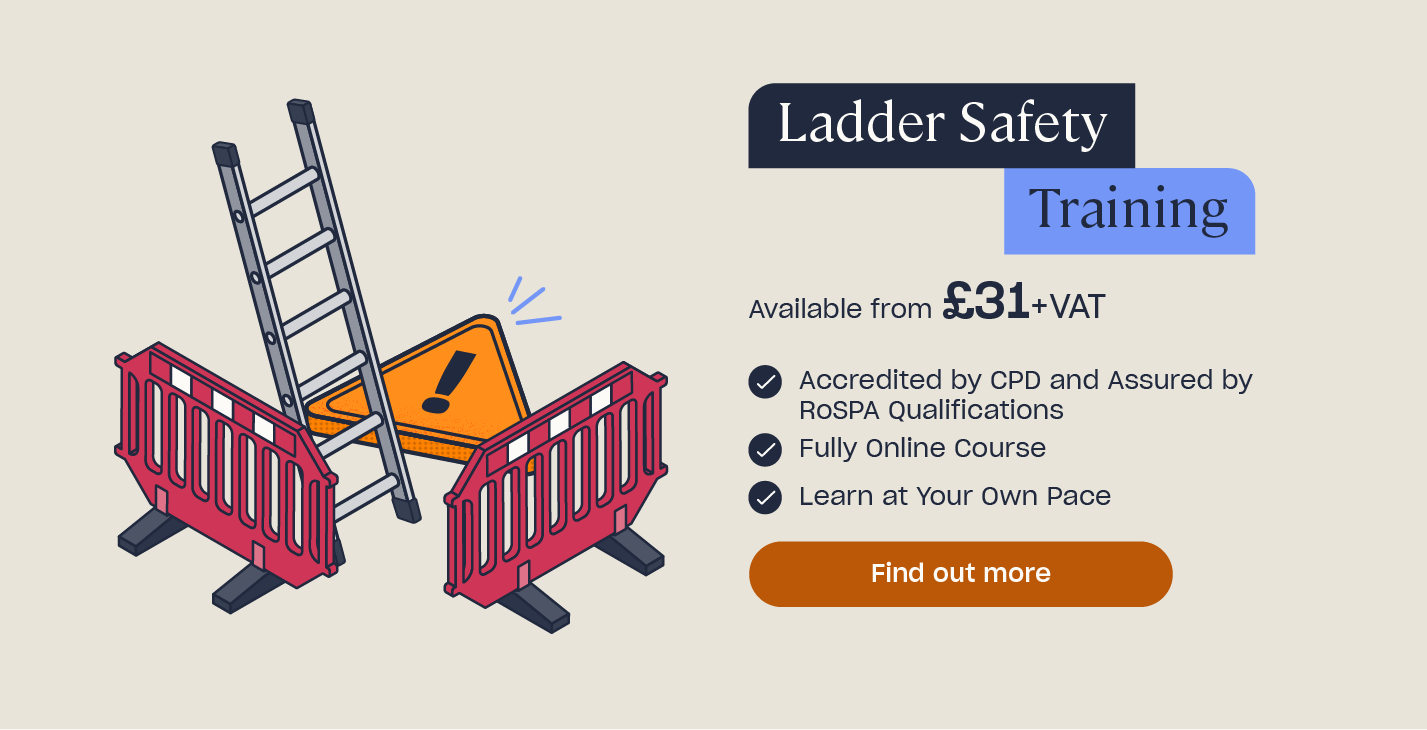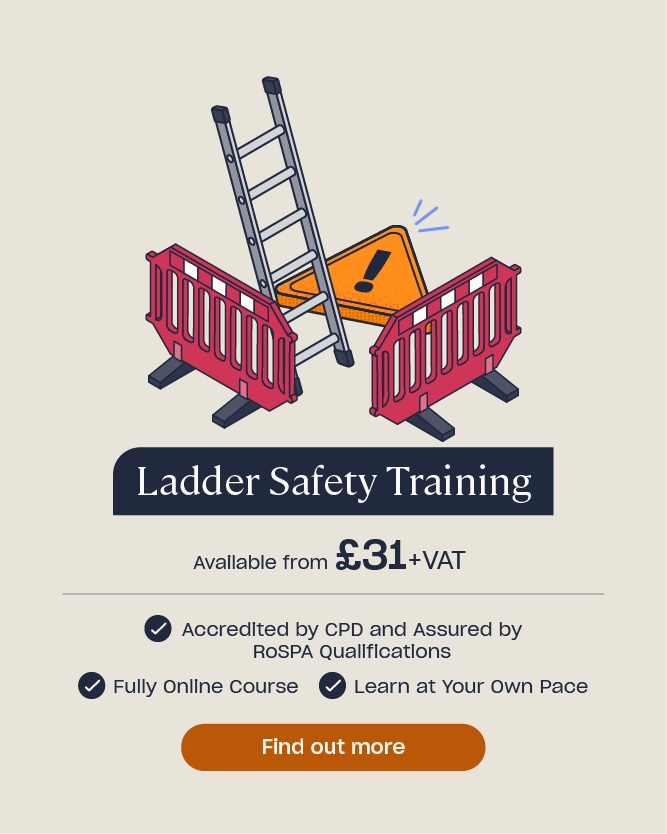Guidance on the Ladder Angle Rule
Ladders are useful for accessing certain heights, whether you’re using them for work activities or for home maintenance. However, they can also present serious safety risks if not controlled. To ensure safety when working on ladders, it’s vital to properly set them up.
One important consideration is that leaning ladders need to be angled correctly to reduce falling risks. To achieve this, you should follow the ladder angle rule set out in health and safety guidance.
In this piece, we’ll explain what the ladder angle rule is, including the 4 to 1 ladder rule and the 75 degree angle ladder rule. We’ll also discuss the other vital ladder safety measures, such as checking a ladder before use and the importance of considering where you’re placing it.
What is the Ladder Angle Rule?
The ladder angle rule, as set out by HSE guidance, explains what angle a leaning ladder should be placed against a surface. This reduces the risk of the ladder falling and of the user falling off the ladder.
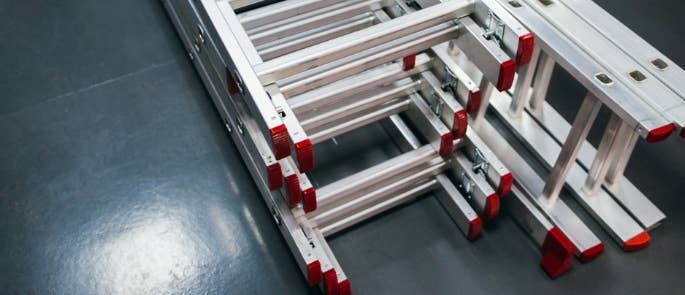
The rule is set out in two forms:
- The 4 to 1 ladder rule.
- The 75 degree angle ladder rule.
Let’s look at what these both mean and at a visual example.
The 4 to 1 Ladder Rule
Leaning ladders should be placed 1 unit out for every 4 units up.
So, for example, let’s say a ladder is placed at a height of 4 metres, i.e. the very top of the ladder is at that height. The distance between the bottom of the ladder and the surface against which it is being leaned will therefore be 1 metre.
The 75 Degree Angle Ladder Rule
The 75 degree rule is the same as the 4 to 1 ladder rule, expressed in a different mathematical format. It basically explains that the ladder should be leaning at a 75 degree angle against the surface. The correct angle is more easily achieved by following the 4 to 1 ladder rule, rather than placing the ladder and measuring the angle until you get it right.
Have a look at the illustration below, which demonstrates the 4 to 1 and 75 degree angle rule.
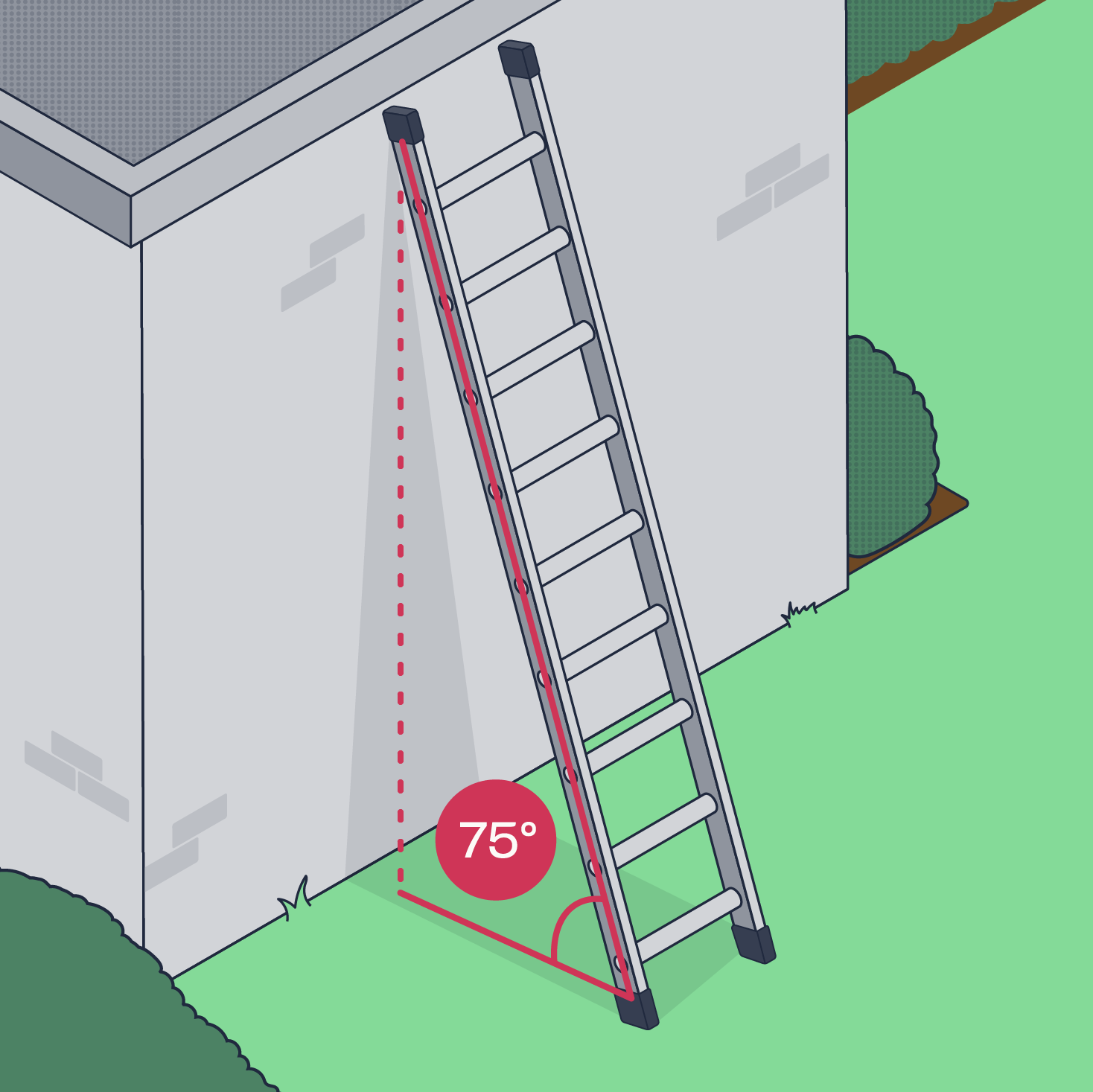
It’s important to note that the ladder must not be used if you cannot follow the 4 to 1 ladder rule and achieve a 75 degree angle. The only exception to this is if the ladder is entirely secure, for example a fixed ladder that’s part of a scaffold structure.
Why is the Ladder Angle Rule Important?
Following the ladder angle rule reduces the risk of the ladder falling and of the user falling off the ladder. This is crucial, because working at height poses a significant risk of falling and the consequences can be serious.
Unsafe selection and use of ladders and stepladders are major causes of fatal and serious accidents at work and at home. The Health and Safety Executive (HSE) reports that falls from a height account for around 8% of non-fatal injuries to employees each year.

This is why it’s essential to follow the necessary control measures, including the ladder angle rule. If it isn’t set up and used correctly, the ladder could slide off the surface on which it’s being leaned or could fall sideways or backwards. If the user overloads the ladder or distributes their weight in an unsafe way, they could cause the ladder to break or fall, or fall off it themselves.
Want to Learn More?
Our Ladder Safety Training provides a complete introduction to ladder safety and the safe working practices you should follow. It explains how to select, carry out pre-use checks, set up, and use ladders as well as outlining the steps of a ladder-specific risk assessment.
Other Examples of Ladder Safety Rules
The 4 to 1 ladder rule is an important control measure to follow. However, it is not the only one. Ladders can present serious safety risks if not set up and used correctly.
The first important consideration is that you must only use a ladder if, according to the risk assessment, the use of more suitable equipment is not justifiable.

This usually means you can use a ladder if the risk is low, if it will be used for a short duration, and if existing features in the area cannot be altered to allow a safer way of accessing the height.
To clarify, low risk means that the ladder user is able to hold it at all times with three points of contact (i.e. two feet and at least one hand), where it involves light duties (e.g. clearing a gutter or changing a lightbulb), where the ladder can be made stable and secure, and where the work is readily accessible and doesn’t require overreaching.
Further examples of important safety measures to follow when using a ladder are set out below:
- Carry out pre-use checks. Users of ladders should check the ladder before each use and if conditions change, for example if it’s moved to a new location. These checks should include assessing the overall condition of the ladder, its stiles, rungs, steps, feet, nuts and bolts, etc. If there are any noticeable issues, it must not be used.
- Maintain three points of contact. As mentioned earlier, you must maintain three points of contact at all times when using a ladder, i.e. both feet and one hand. Also, you must not overreach. A good benchmark for preventing overreaching is keeping your waist within the same area as the ladder and both feet on a rung throughout the task.
- Place the ladder on a strong and stable surface. The bottom of the ladder must be on a firm, level surface and a clean, non-slip floor. You must never place a ladder on movable objects, like a pile of bricks, or use them in strong or gusty winds. The top must be placed against a firm surface, such as a solid wall. Never lean it against guttering or a window, as these could break under the weight.
- Never overload the ladder. You must not exceed the stated load of the ladder. There are normally pictograms or a label on the ladder showing the maximum weight that the ladder can safely bear.
- Secure the ladder if possible. While the 4 to 1 rule is effective for stabilising a ladder, it’s advised that you secure the stiles near the top if you can. For example, by tying the stiles to something or using a specific ladder stability device. You can find more guidance about this in our dedicated article on How to Safely Secure a Ladder.
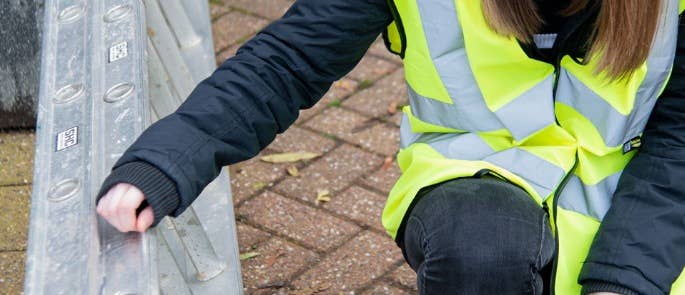
These are just some of the important ways to set up and use a ladder safely. If you’re carrying out work with a ladder, it’s vital to familiarise yourself with all the safety measures required to use a ladder. In a workplace context, your employer must provide you with training in how to use ladders safely and you must follow it.
Ladders are useful for accessing heights, but they can pose serious safety risks if not set up and used correctly. This is why health and safety guidance sets out the 4 to 1 (75 degrees) ladder angle rule. Following this rule, as well as other vital control measures and safety practices, will help to ensure your safety when working at height with a ladder.
What to Read Next:
- Online Ladder Safety Training Course
- Safely Securing Ladders: Guidance and Procedures
- Using Fall Protection to Control Working at Height Hazards
- Ladder Safety Quiz
- A Ladder Inspection Checklist: Free Template


